Many people will probably be aware of the rise in popularity of “reacts” social media pages. The idea is that the Facebook or Twitter page takes a popular cultural phenomenon, often a television show, and posts pictures from it with a humorous caption (usually in a bid to get as many likes as possible and thus gain followers, sponsorship, and money). One such type that has become increasingly popular is pages based on the ‘medieval’ or ‘classical’. In this, pictures from different historical periods are posted with captions with a modern day twist. Some examples from popular Facebook page Classical Art Memes are below.
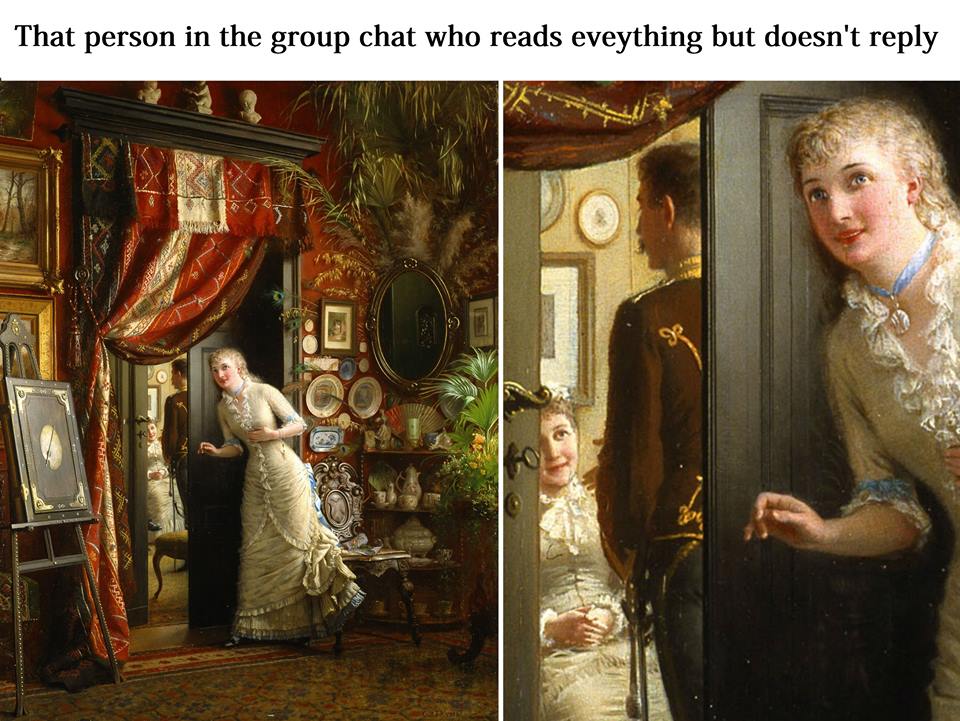
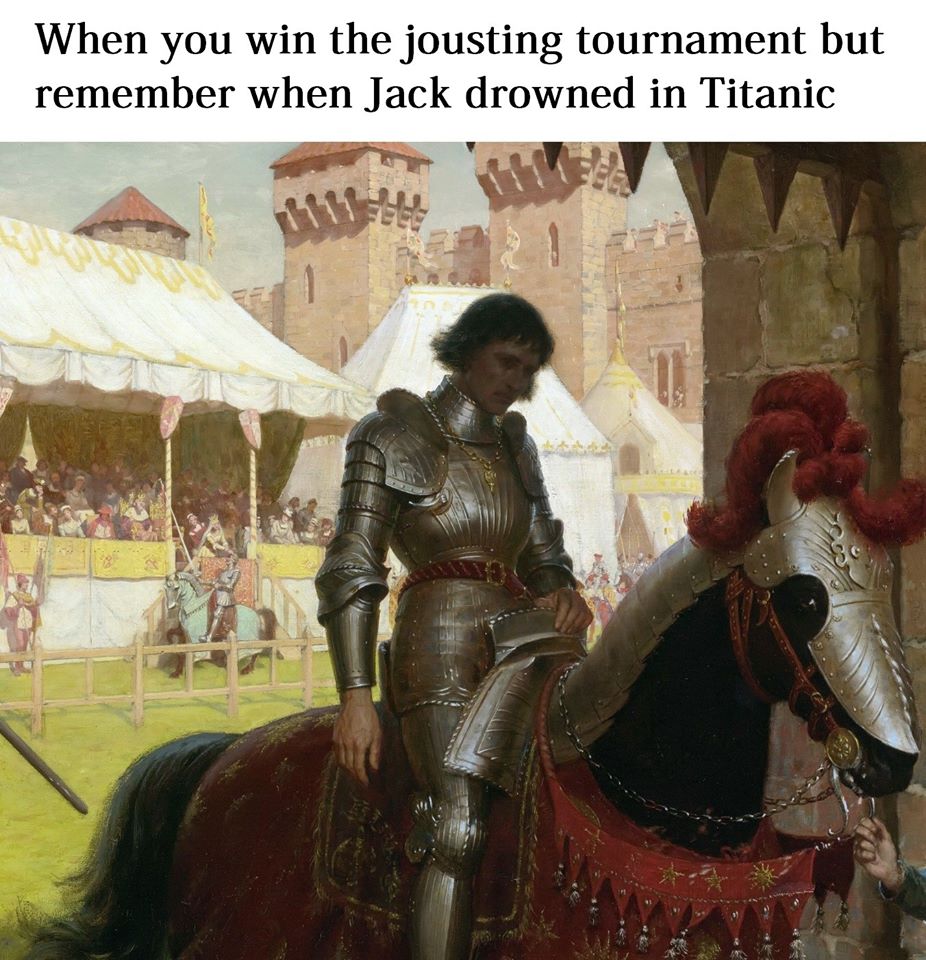

Whilst these pages offer a light bit of humour to a mostly younger, social-media hungry generation scrolling through timelines, I think it is a refreshing phenomenon to see as a young historian. True, historians have highlighted some of the issues about these pages, such as how they are run by organisations purely to make money and gain exposure, and how the lack of attribution of the source for the picture is problematic. (Sarah Werner writes a good piece in more depth about these issues here, which focuses more on the pages proclaiming to use historical photographs and facts, but has relevance here).
However, whilst I agree with these problems, I think it is small enough to overlook. As a young person who studied history for four years at University, I have constantly been struck when talking to members of my parents’ generation at the reaction I get when I say I study history. In almost every single conversation I have had over the years, the reaction I got was “Oh, I never liked history at school, I found it really boring, but now that I’m older I absolutely love it”. Our school system is not set up in a way to make history interesting and engaging for children. We follow a check list as we go through school: Ancient Civilisations (Romans, Egyptians, Greeks), 1066, the Tudors, maybe a bit on women’s suffrage, the rise of the labour party and workers’ rights, and then the two World Wars. Sometimes a bit of slavery and empire thrown in there. And dates, dates, facts, dates, facts. There is less interest in making history relatable for children, but instead, like many subjects at school nowadays, it is about pumping facts into children so that they can get sufficient grades to pass them on to the next lot and make the school look alright.
That’s the problem many people of both my parents’ generations and my own had with history at school – it’s not interesting, it’s just stuffy old dead people and dates and facts. At University, history is taught as the incredibly interesting subject that it is – I have never once in my four years been required to learn a date. Sure, I have inadvertently learnt dates and events, but they were always inconsequential – it was the process of history, the social issues, political plays, what people thought and felt and how that affected the course of history that was taught. And that is why I think these pages are so good for history as a discipline – it engages people who may have otherwise been turned away from history. Sure, these pages can make light of a different time with trivial modern day problems, or juxtapose modern worries onto an unrelated historical scene. But as much as we like to think the people of the past were constantly riddled with issues like will their whole village die of plague, will they starve to death this winter, are they about to go to war with France again, they were, too, riddled with issues more relatable to us modern viewers. Is a lord’s wife cheating on him, perhaps corrupting his blood line? Is Mrs Jones spreading gossip about her neighbours again? Is a young noblewoman’s dress pretty enough to attract her beau at the next social occasion?
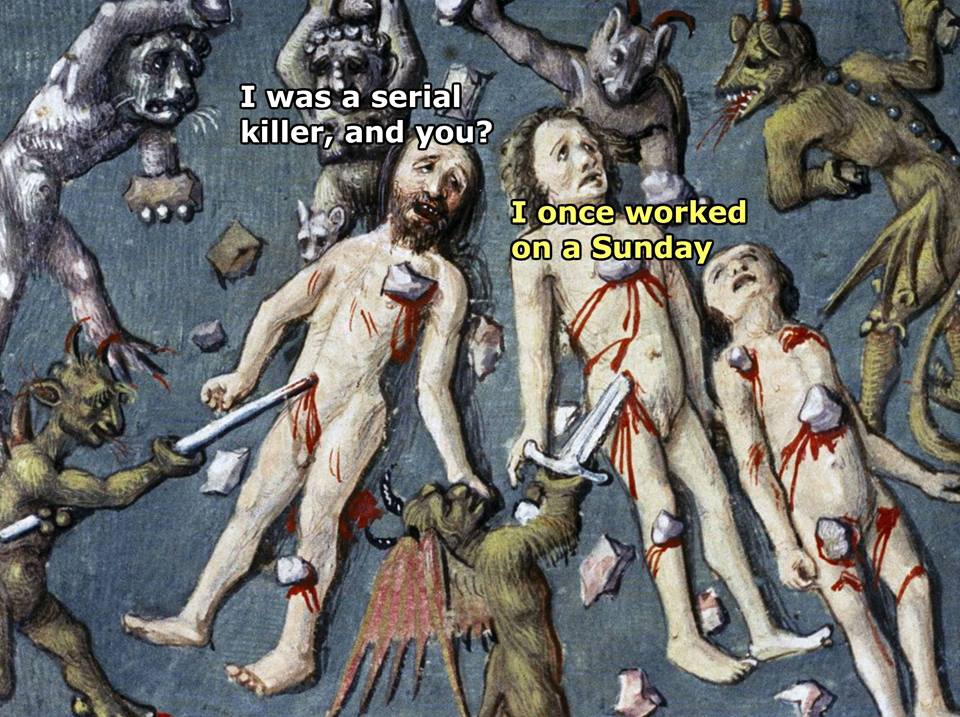
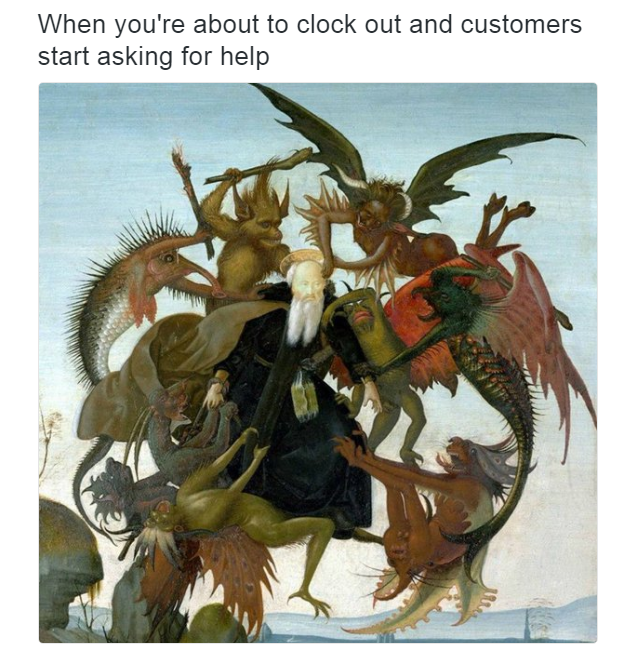
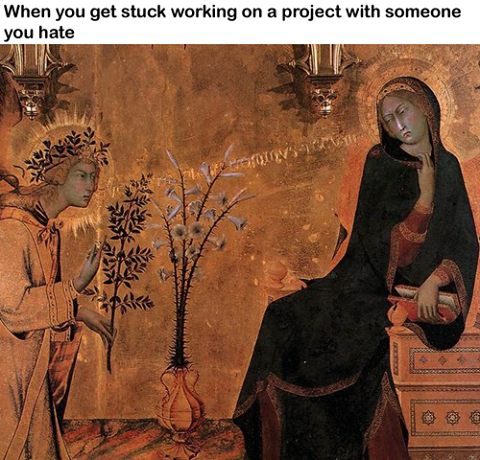
Pictures from Classical Art Memes
For me, these pages give a way for people to engage with history without them necessarily realising it. It breaks down this idea that people in the past were an “other” unrecognisable to us today. It makes light of the past, but this is just a different way of engaging with history. If it can help people realise that history doesn’t have to be boring, it can be fun, then perhaps it can encourage them to engage with history in different ways. Just as historical television dramas that bend the past to entertain viewers can encourage people to look up what really happened, these pages might mean that the next time someone walks past a history book, rather than automatically thinking “ew, boring” they might go “oh I saw something about that on Facebook, it might be interesting”. This engagement is demonstrated by the millions of followers these pages gain, the thousands of likes, and the hundreds of comments where ordinary people often zoom in on sections of the posted picture and add humorous captions of their own.

Enjoying this blog post? Buy me a hot chocolate!
Consider donating the cost of a hot chocolate to me, so I can continue to write and run Just History Posts.
£3.50
A more detailed example of this modernisation comes from the Two Monks posts on The Toast (see a list of some of their posts here). The concept behind Two Monks is that the creator imagines conversations between two monks who are producing the drawings found littered across medieval manuscripts. Manuscript illustrations are notoriously strange, with wonderful hybrid creatures, anatomically incorrect people, and scenes reminiscent from a drug-induced hallucination. The Two Monks posts attempt to humorously make sense of the thought process behind some of these illustrations:
(some excerpts from Two Monks)
MONK #1: do birds have meetings
MONK #2: absolutely
they have a Meeting Hat and everything
MONK #1: what do they have meetings about
MONK #2: mostly who gets to wear the meeting hat

(found here)
MONK #1: uuuuuuggghh
MONK #2: whats up
MONK #1: how many eyes does a dog have
MONK #2: oh man
wow
MONK #1: RIGHT?
MONK #2: that is a good question
MONK #1: because like
i can tell that for sure seven is NOT RIGHT
but beyond that
i have no idea
MONK #2: ok well it’s time for lunch
so i feel like
executive decision
seven is fine
MONK #1: you sure?
MONK #2: yes im sure
we’re having bread today and i don’t want to miss it

(found here)
MONK #1: i forget if with dinner parties do people usually have normal eyes and smiling faces, or –
MONK #2: red eyes and despair
MONK #1: okay i was pretty sure that was the one

MONK #2: just very red eyes and sorrow and pushing plates away
MONK #1: ok good
MONK #2: that’s how you know its dinner
(found here)
Again, these posts add some humanity to a distant past. It is easy to read the manuscripts created by these men hundreds of years ago and take it at face value, merely reading what is written. But it is important to remember that these manuscripts, and the illustrations in it, were created by human beings just like us. These men were often locked away in all-male monasteries, often in the middle of nowhere. It was cold, it was boring, and all they did all day was pray and write. Half of the kooky illustrations we get from manuscripts were doodled in the margins by bored monks. They wrote notes to other monks who would be reading the books, they complained about having sore hands, and they let their imagination run away with them whilst copying out potentially boring and tedious writings and doodled in the margin. Take a look in almost any school kid’s work books, and you will find the same thing! Once again, this opens up the relatable, human side of history. No facts, no dates, no bore. Just a few medieval monks bored on a Tuesday afternoon. Again, these imagined conversations modernise the issues, but the underlying theme remains. It helps make history more accessible to the masses. And it gives us a giggle on a bored Tuesday afternoon of our own.
Previous Blog Post: Royal People: Eleanor Cobham, Royal Witch?
List of Blog Posts: here Blog Homepage: here
Buy my books via the pictures below! Or why not check out our shop?
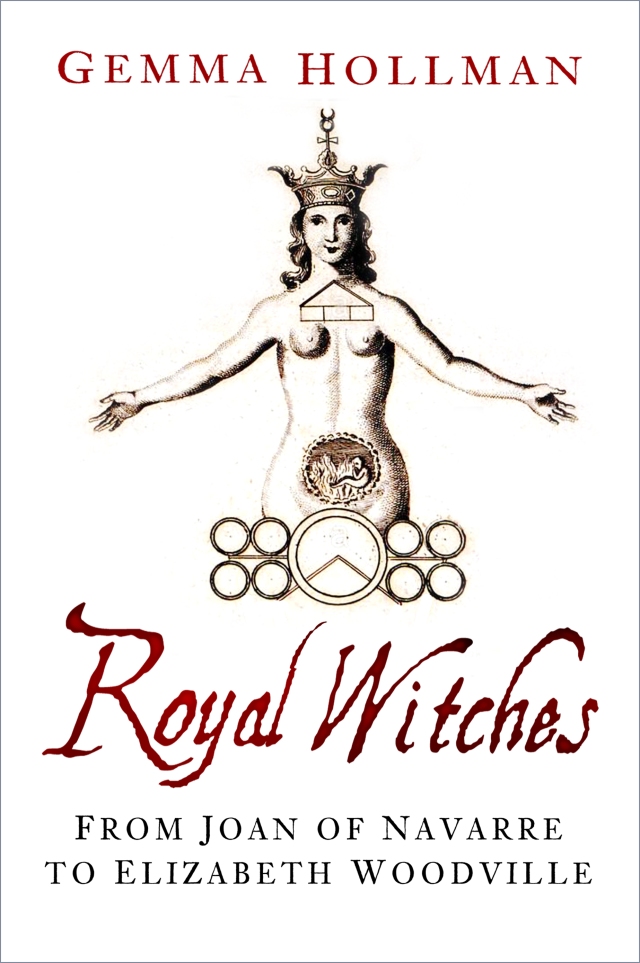
Follow us:


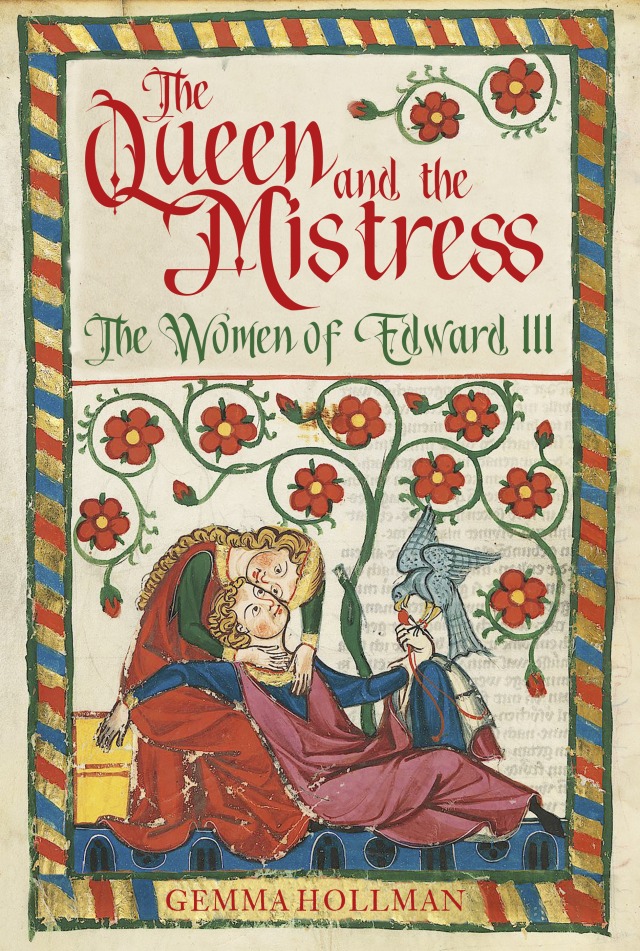



3 thoughts on “Medieval Reacts and Two Monks: History in Social Media”